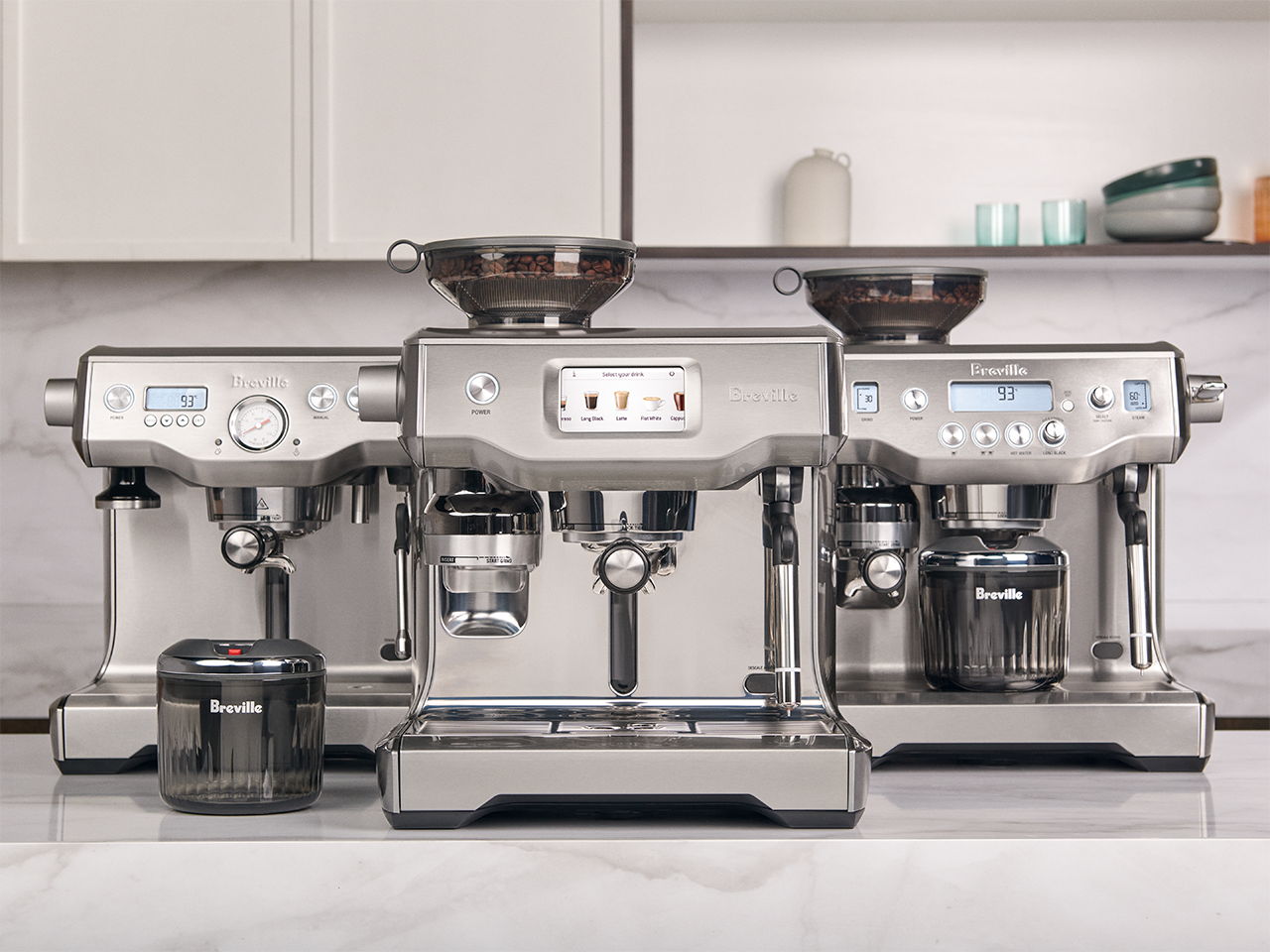
Types of Espresso Machines: A Comprehensive Guide
Espresso machines have revolutionized the way we enjoy coffee, allowing us to create café-quality espresso at home or in a professional setting. Whether you are a coffee aficionado or a barista-in-training, understanding the different types of espresso machines is crucial in selecting the right one for your needs. This comprehensive guide will delve into the various types of espresso machines, their features, benefits, and which one might be the perfect fit for you.
1. Manual Espresso Machines
Manual espresso machines, also known as lever machines, are the traditional way of making espresso. They offer complete control over the brewing process, which is ideal for those who appreciate the art and precision of coffee making.
How They Work
Manual machines use a lever operated by the user to force water through the coffee grounds. There are two types of manual machines: direct lever and spring piston. In a direct lever machine, the user applies force directly to the lever to create pressure. In a spring piston machine, the user primes a spring that then applies consistent pressure.
Benefits
- Control: Users have full control over every aspect of the brewing process, including pressure and timing.
- Quality: When used correctly, manual machines can produce exceptional espresso with rich flavors and a perfect crema.
- Aesthetics: Many manual machines have a classic, elegant design that adds a touch of sophistication to any kitchen.
Drawbacks
- Skill Level: Requires a high level of skill and practice to master.
- Time-Consuming: The process is more labor-intensive and time-consuming compared to automatic machines.
Top Picks
- La Pavoni Europiccola: Known for its beautiful design and excellent build quality.
- Elektra Microcasa a Leva: Offers a stunning design with reliable performance.
2. Semi-Automatic Espresso Machines
Semi-automatic espresso machines are the most popular choice among home baristas. They automate some aspects of the brewing process while allowing users to control other variables, striking a balance between convenience and control.
How They Work
These machines use an electric pump to generate the pressure needed for extraction. The user grinds the coffee, doses, and tamps it into the portafilter, then initiates the extraction process by activating the pump. The user also stops the extraction manually.
Benefits
- Control and Flexibility: Offers control over grind size, tamping, and extraction time.
- Ease of Use: Easier to use than manual machines, but still allows for skill development.
- Versatility: Suitable for a wide range of espresso drinks, including lattes and cappuccinos.
Drawbacks
- Learning Curve: Requires some practice to perfect the technique.
- Manual Intervention: Users need to manually start and stop the extraction process.
Top Picks
- Breville Barista Express: Features a built-in grinder and steam wand, making it an all-in-one solution.
- Gaggia Classic Pro: Known for its durability and professional-grade components.
3. Automatic Espresso Machines
Automatic espresso machines further automate the espresso-making process. They are similar to semi-automatic machines but include a feature that automatically stops the extraction after a preset amount of water has been dispensed.
How They Work
Automatic machines use an electric pump to force water through the coffee grounds. The user sets the desired volume of espresso, and the machine automatically stops the extraction once that volume is reached.
Benefits
- Consistency: Provides consistent results by automating the extraction time.
- Convenience: Easier to use than semi-automatic machines, making them suitable for beginners.
- Time-Saving: Less manual intervention required, allowing for multitasking.
Drawbacks
- Less Control: Reduced control over the extraction process compared to semi-automatic machines.
- Higher Cost: Generally more expensive than semi-automatic machines.
Top Picks
- DeLonghi La Specialista: Combines ease of use with advanced features like a built-in grinder and smart tamping station.
- Rancilio Silvia: Offers a great balance of performance and user control.
4. Super-Automatic Espresso Machines
Super-automatic espresso machines are designed for ultimate convenience. They automate every step of the espresso-making process, from grinding the beans to frothing the milk.
How They Work
These machines have built-in grinders and brewing systems that handle every aspect of making espresso. Users simply add coffee beans and water, select their desired drink, and the machine does the rest.
Benefits
- Ease of Use: The most user-friendly option, perfect for those who want a hassle-free experience.
- Consistency: Delivers consistent results with minimal effort.
- Versatility: Often includes options for a variety of coffee drinks, including cappuccinos, lattes, and macchiatos.
Drawbacks
- Cost: Typically the most expensive type of espresso machine.
- Maintenance: Requires regular cleaning and maintenance to keep all components functioning properly.
Top Picks
- DeLonghi Eletta Explore: Features a built-in grinder, milk frothing system, and customizable settings.
- Philips 5400 Series: Known for its user-friendly interface and excellent milk frothing capabilities.
5. Capsule Espresso Machines
Capsule espresso machines, also known as pod machines, use pre-packaged coffee capsules to make espresso. They are designed for convenience and simplicity, making them a popular choice for busy individuals.
How They Work
Users insert a coffee capsule into the machine, which then pierces the capsule and forces hot water through it to extract the coffee. The used capsule is automatically ejected into a waste container.
Benefits
- Convenience: Extremely easy to use with minimal cleanup required.
- Consistency: Delivers consistent results with each capsule.
- Speed: Quick and efficient, perfect for making espresso in a hurry.
Drawbacks
- Cost: Capsules can be more expensive than whole beans or ground coffee.
- Limited Customization: Less control over the brewing process and flavor profile.
- Environmental Impact: Capsules can create more waste compared to traditional methods.
Top Picks
- Nespresso VertuoPlus: Offers a wide variety of coffee and espresso options with a user-friendly design.
- Lavazza A Modo Mio: Known for its rich and authentic Italian espresso.
6. Commercial Espresso Machines
Commercial espresso machines are designed for high-volume use in cafés, restaurants, and other professional settings. They are built to withstand continuous use and deliver consistent, high-quality espresso.
How They Work
Commercial machines often feature multiple group heads, large boilers, and advanced controls to handle the demands of a busy coffee shop. They require professional installation and maintenance.
Benefits
- High Capacity: Can produce multiple shots of espresso simultaneously.
- Durability: Built to last and withstand heavy use.
- Advanced Features: Includes options for precise temperature control, pressure profiling, and more.
Drawbacks
- Cost: Very expensive and typically not suitable for home use.
- Size: Large and requires significant space and power supply.
- Complexity: Requires professional training to operate and maintain.
Top Picks
- La Marzocco Linea PB: Known for its reliability, consistency, and advanced features.
- Synesso MVP Hydra: Offers precise control over pressure and temperature for optimal extraction.

7. Portable Espresso Machines
Portable espresso machines are designed for coffee lovers on the go. They are compact, lightweight, and can be used without electricity, making them perfect for travel, camping, or office use.
How They Work
These machines use manual pressure or battery power to extract espresso. Users add ground coffee and hot water, then use a hand pump or battery-operated mechanism to create the pressure needed for extraction.
Benefits
- Portability: Easy to carry and use anywhere.
- Convenience: No need for electricity or large equipment.
- Affordability: Generally more affordable than traditional espresso machines.
Drawbacks
- Limited Capacity: Can only make one or two shots at a time.
- Manual Effort: Requires some manual effort to operate.
- Variable Quality: Quality can vary based on the specific model and user technique.
Top Picks
- Wacaco Nanopresso: Compact, lightweight, and capable of producing impressive espresso shots.
- Flair Espresso Maker: Manual lever-operated machine known for its excellent build quality and espresso results.
8. Stovetop Espresso Makers
Stovetop espresso makers, also known as Moka pots, are a traditional and affordable way to make espresso-like coffee at home. They are popular in Europe and Latin America for their simplicity and rich flavor.
How They Work
Moka pots use steam pressure to force water through coffee grounds. The pot consists of three chambers: one for water, one for coffee grounds, and one for the brewed coffee. The pot is heated on a stovetop, creating steam pressure that pushes the water through the grounds.
Benefits
- Affordability: Much cheaper than electric espresso machines.
- Simplicity: Easy to use and requires no electricity.
- Rich Flavor: Produces a strong, rich coffee similar to espresso.
Drawbacks
- Pressure: Does not generate as much pressure as electric machines, resulting in a different texture and crema.
- Manual Process: Requires manual heating and monitoring.
- Limited Capacity: Typically makes only a few servings at a time.
Top Picks
- Bialetti Moka Express: The classic Moka pot known for its durability and iconic design.
- Grosche Milano Stovetop Espresso Maker: Offers a modern design with high-quality construction.
Conclusion
Choosing the right espresso machine depends on your preferences, budget, and skill level. Whether you prefer the hands-on approach of a manual machine, the balance of control and convenience offered by
semi-automatic machines, or the ultimate ease of super-automatic machines, there is an espresso machine out there for you. Capsule machines provide a quick and consistent option for those with a busy lifestyle, while portable and stovetop options cater to those on the go or seeking simplicity.
By understanding the different types of espresso machines and their features, you can make an informed decision and enjoy café-quality espresso right at home or in your business. Happy brewing!
Frequently Asked Questions (FAQ)
What type of espresso machine is best for beginners?
Semi-automatic and automatic machines are great for beginners as they offer a balance of control and ease of use. The Breville Barista Express is a popular choice for its user-friendly features and built-in grinder.
How often should I clean my espresso machine?
It's important to clean the portafilter, steam wand, and drip tray daily. Perform a more thorough cleaning, including descaling, every 1-3 months depending on usage and water hardness.
Can I use regular coffee beans in an espresso machine?
Yes, you can use regular coffee beans, but espresso typically requires a darker roast to bring out the rich, bold flavors. Experiment with different roasts to find your preference.
What is the difference between an automatic and a super-automatic espresso machine?
Automatic machines stop the extraction process automatically but require manual grinding, dosing, and tamping. Super-automatic machines automate every step, including grinding, dosing, tamping, and milk frothing.
Are manual espresso machines difficult to use?
Manual machines have a steeper learning curve and require practice to master. However, they offer complete control over the brewing process and can produce exceptional espresso when used correctly.
By selecting the right espresso machine and following best practices for use and maintenance, you can enjoy delicious espresso drinks and elevate your coffee experience.
Different Variation:
- Different Types of Espresso Machines Explained
- A Guide to the Various Types of Espresso Machines
- Understanding the Types of Espresso Machines
- Exploring the Different Types of Espresso Machines
- The Complete Guide to Espresso Machine Types
- Types of Espresso Machines: Which One is Right for You?
- All About Espresso Machines: Types and Features
- Espresso Machine Types: A Comprehensive Overview
